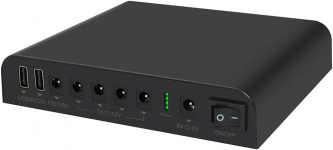- Location
- Lockport, IL
- Occupation
- Retired Electrical Engineer
I recently signed up for FO. I'm waiting for the technician to contact me to schedule the install. I am told they will dig a trench from their box in the common yard to our townhouse. I am concerned about where they will install their FO router (if that is the right term). We have an unfinished basement and a second floor (mostly used by guests, so the WIFI and TV signals need to reach that far). The level of the outside grade comes about halfway up the basement wall.
I don't want it in the basement, for three reasons, all of which may be irrational or simply unimportant. That is why I am posting this thread. I am hoping for enlightenment from my fellow forum members.
First, stairs are not my best friends lately. I would not want to have to go downstairs to reset something and thereby miss part of a football game. But perhaps this component never needs to be reset?
Secondly, there are very few receptacles in the basement near the wall that faces the common yard. The ones that are there are taken up by the water softener and the reverse osmosis system. Although our service panel is on that wall, I would rather not have to hire an electrician to install a new dedicated receptacle. I don't know how much power their equipment requires, so I can't tell whether it can share a receptacle with any existing load.
My third and most concerning reason is that I don't know to what extend the FO system's signal might be degraded by having to pass through the concrete ceiling of the basement and then up to the second floor.
Before I find myself in a debate with the technician, can anyone allay my concerns? TIA
I don't want it in the basement, for three reasons, all of which may be irrational or simply unimportant. That is why I am posting this thread. I am hoping for enlightenment from my fellow forum members.
First, stairs are not my best friends lately. I would not want to have to go downstairs to reset something and thereby miss part of a football game. But perhaps this component never needs to be reset?
Secondly, there are very few receptacles in the basement near the wall that faces the common yard. The ones that are there are taken up by the water softener and the reverse osmosis system. Although our service panel is on that wall, I would rather not have to hire an electrician to install a new dedicated receptacle. I don't know how much power their equipment requires, so I can't tell whether it can share a receptacle with any existing load.
My third and most concerning reason is that I don't know to what extend the FO system's signal might be degraded by having to pass through the concrete ceiling of the basement and then up to the second floor.
Before I find myself in a debate with the technician, can anyone allay my concerns? TIA



